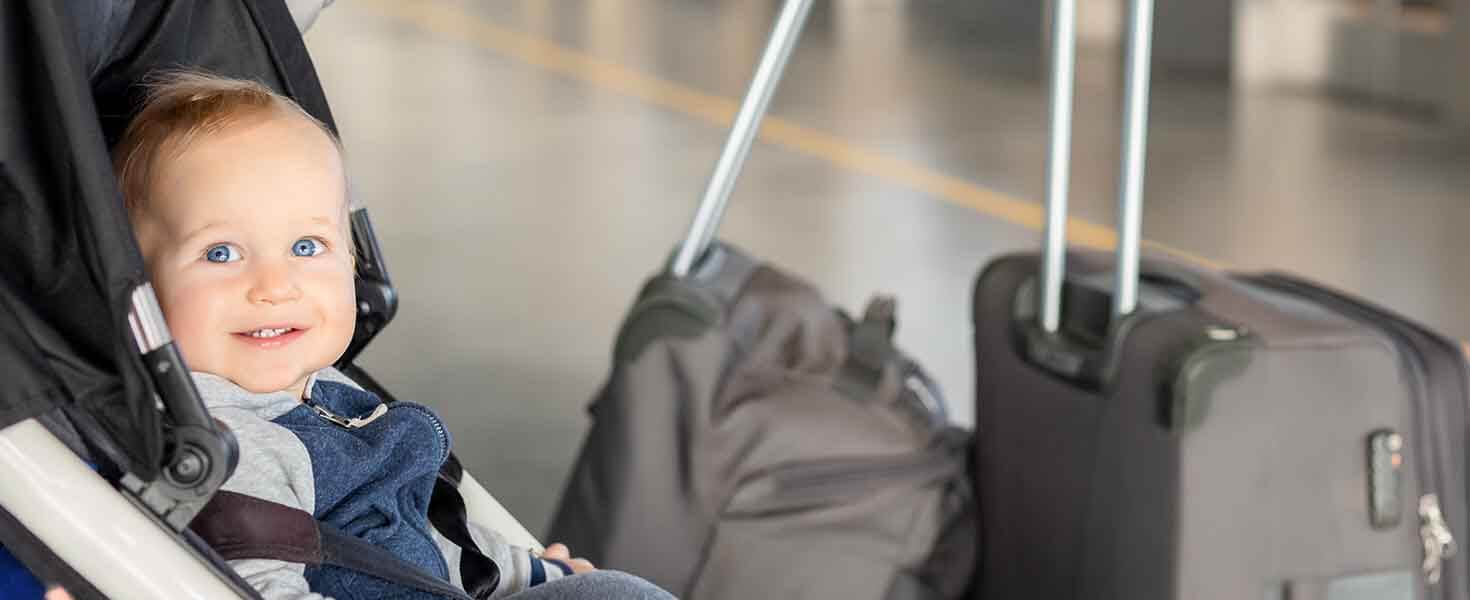

Traveling with a baby for the first time can be daunting, if not utterly frightening. I should know: I recently became a first-time mom to a baby girl. Even though I’m a seasoned travel journalist with 20-plus years of globetrotting under my belt, I realize that traveling with a person under the age of 1 is going to be a BIG departure from how I’m used to traveling. (The diapers! The feedings! The baby accessories! The blowouts!)
Anticipating this, I’ve consulted some of my most well-traveled colleagues in the industry—those with kids—for advice. I’ve curated a collection of the best advice received in the hopes that it may help others embarking on a trip with someone under 1 year old.
Of course, you’ll want to check with your pediatrician ahead of traveling for the most appropriate recommendations for your child. But perhaps some of what’s below will help you on your first journey with baby—hopefully making it a little less daunting and, if you’re lucky, blowout-free.
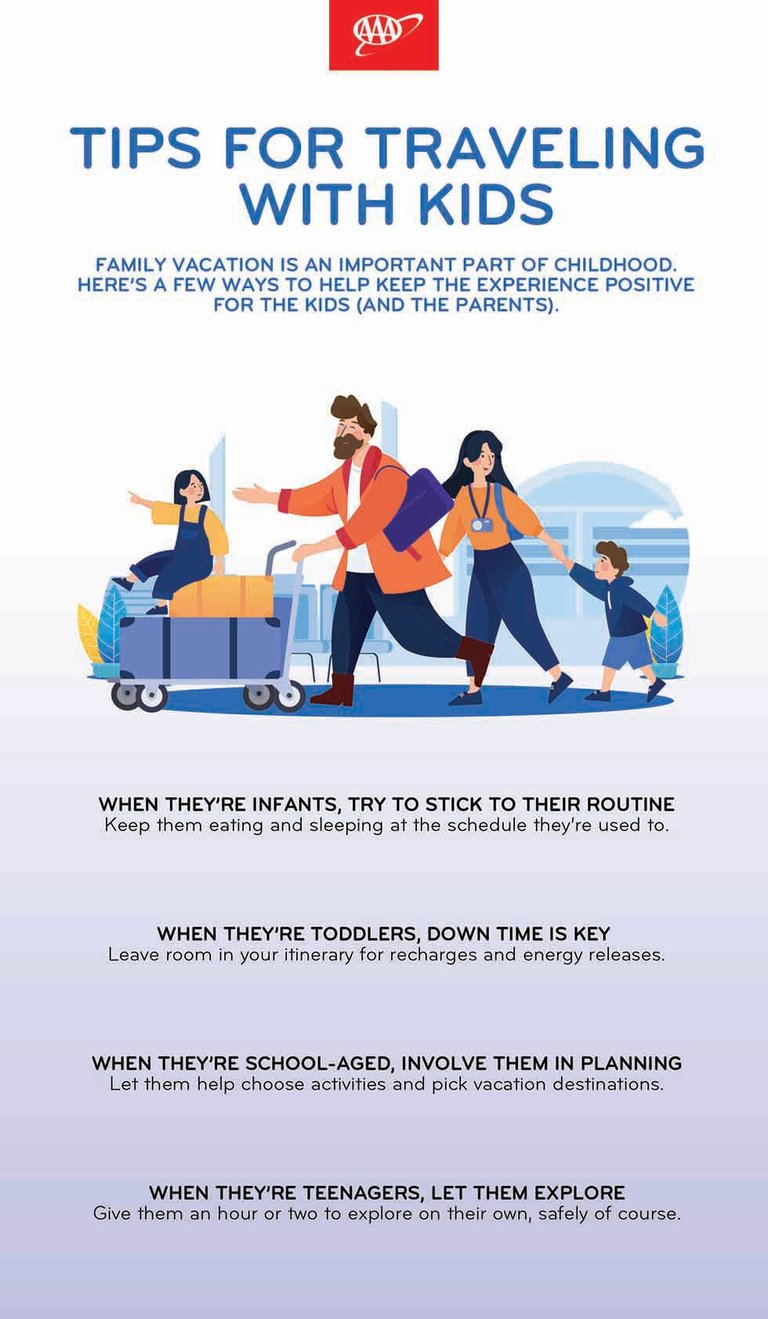
First, a positive
Babies under 1 years old can’t run, can’t talk, are relatively portable, and still sleep a lot. That makes them an ideal travel companion compared to, say, a toddler. Plus, starting early acclimates them to the experience of travel, a skill that’s never too early to “learn.”
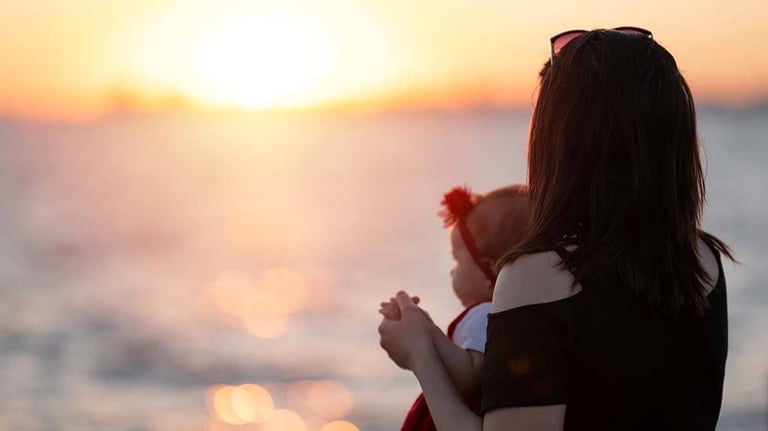
Travel basics with baby
Regardless of how you’re traveling or where you’re going, some key recommendations include:
- Take as little gear as possible. Rent (or even buy) gear in your destination whenever possible. Sometimes shipping it is even an option. Bottom line: The lighter you travel, the easier it will be.
- Allow yourself at least twice as much time as you think you’ll need.
- Avoid jam-packing itineraries, and know when to abandon or shift a plan in real-time. Flexibility will make everyone happier.
- Purchase diapers and wipes in bulk once in your destination. Only bring enough diapers and wipes for getting from Point A to Point B.
- In your carry-on, pack at least two changes of clothing for baby AND yourself. Blowouts tend happen at the most inconvenient of times.
- Bring a portable changing pad. Don’t assume changing tables will be available everywhere.
- Pack extra zip-lock bags or a trash bag for soiled clothing.
- Bring hand sanitizer (for you) and wipes (to sanitize any public seating areas for baby).
- Don’t forget the infant Tylenol and gripe water. You never know when you might need either in a pinch.
- If you breastfeed, pack a nursing cover and know your rights in each state.
- If you bottle feed, pack pre-portioned bottles of formula or breast milk in a small cooler bag.
- Bring whatever will keep your baby engaged and amused during awake time while traveling—even if it means relying on the iPad!
- Enjoy the slower pace a baby brings.
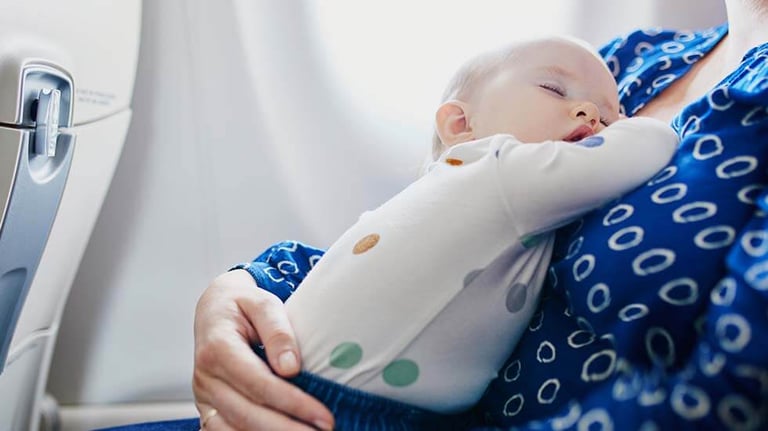
Airports and planes with baby
It’s worth paying extra for a flight that works best with your baby’s sleep schedule and avoids layovers.
Try to secure an aisle seat at the front of the plane. It makes it easier for getting up to walk around with baby. To claim this coveted seat: pre-book it, call in advance, or show up early—as in, arrive at the airport before the other parents!
On most domestic flights, an infant in the lap flies for free. On international flights, there may be a fee. Either way, call the airline in advance to confirm (and make any necessary payments before arriving at the airport).
Most airlines will consider breast pumps a medical device and not count it as a carry-on. Check with your chosen carrier in advance of flying.
TSA policy allows carry-ons to contain formula, breast milk and juice in reasonable quantities.
Wear your baby in a carrier, like a Baby Bjorn or ErgoBaby, and rent a stroller in your destination to avoid the hassle of traveling with it. (Bonus: Most parents said they were able to walk through security wearing their baby without taking the carrier off.)
If you forgo renting a stroller, bring a travel-specific stroller, such as the BabyZen YOYO. You want a stroller that can collapse to fit into the overhead compartment. If you bring anything bigger, expect to gate check it to your destination (and risk it getting a little dinged in the transport).
Every U.S. airline will allow you to check your car seat for free. Plus, you can pack extra stuff in your car seat bag!
Take advantage of priority boarding, security screening, and customs lines specifically for families with small children.
Feed your baby (or offer a pacifier) at takeoff and landing—as it’s calming and can help offset any pain in their still-developing ears.
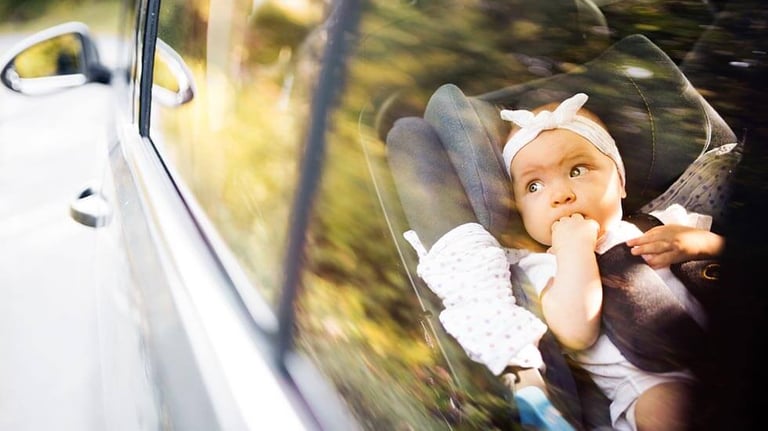
Road trips with baby
When gauging how long it might take to get from Point A to Point B, be conservative -- as stops may take longer than you anticipate. (And some necessary stops may not be part of the original “plan.”)
Maximize your drive time by scheduling the departure so that it coincides with baby’s bedtime, right after a big feeding.
Plan your road trip stops wisely, with stops every 1 to 3 hours. Babies who cannot sit up on their own shouldn’t stay in the car seat any longer than this. (This ought to align with their feeding schedule anyhow.)
Babies do best in a moving car. Try to avoid rush-hour traffic, which can be stop and go.
Bring pee pads for the car seat. You may even want to start using diaper covers, for an extra layer of protection. Nothing worse than a blowout that leads to a permanently stinky car seat … and a stinky car.
Do diaper changes on the seat of your car during stops. You can better control the cleanliness of your car seat than, say, the bathroom of a rest stop of restaurant.
Pausing for breaks at a Target or Wal-Mart can double as an opportunity to pick up extra baby needs.
If you pump, invest in a car charger for the pump or use a portable pump, such as the Willow or Elvie.
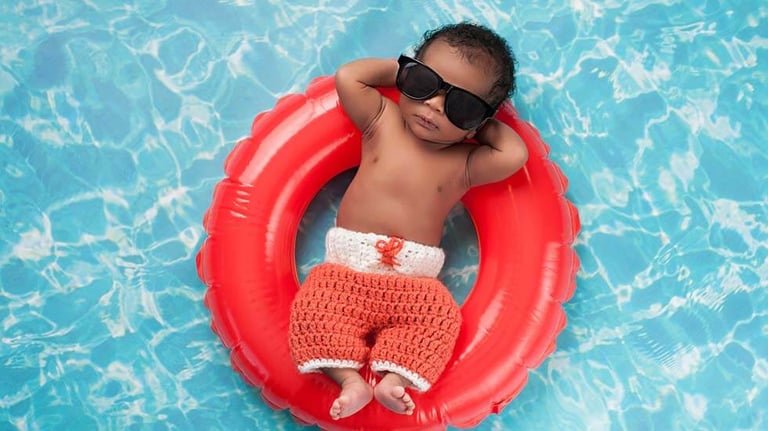
Accommodations with baby in mind
Consider a vacation rental home, such as those you can rent via Airbnb or VRBO, as you’ll have more space to spread out—plus a kitchen (to store milk/formula) and laundry (to wash soiled clothing).
If staying at a hotel, book a suite. It will guarantee a separate sleeping area for your baby.
Some hotels can supply a room with a refrigerator and a crib; request these in advance. If traveling by car, however, you might bring your own pack-and-play or portable crib.
Regardless of how you secure a crib, definitely pack a fresh crib sheet, favorite blanket and a portable sound machine, such as a Yogasleep Hushh. The sound machine will drown out the unfamiliar noises of a new environment.
Portable blackout curtains (or taping up black trash bags over the windows) can help to further create an optimal baby sleeping environment that’s free from visual distractions.
